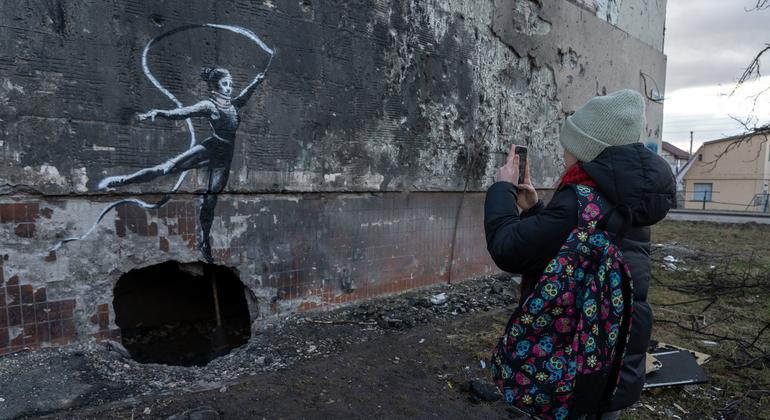The artwork – a ballerina balancing precariously on the rubble – solidified the town’s reputation as a beacon of resilience. Despite Borodianka’s sudden fame, the efforts of its local artists musicians and librarians to revive their beloved hometown remain largely unknown outside Ukraine.
Now, cultural activities, one supported by the UN’s International Organization for Migration (IOM), are drawing hundreds of fans, choirs are singing again, and art is being made and taught by inspirational local artists.
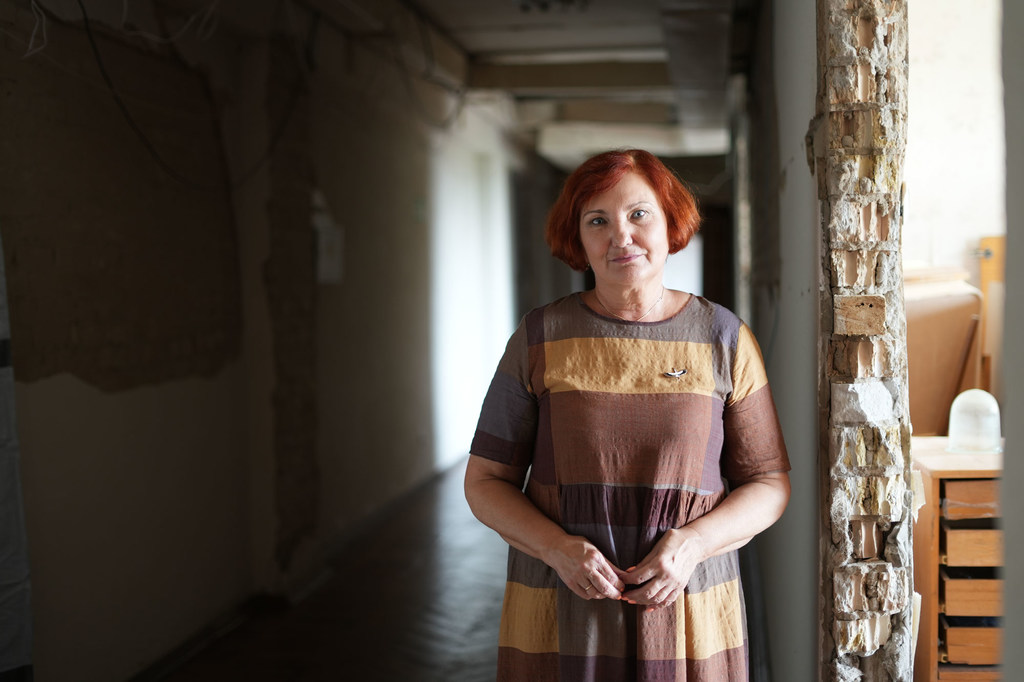
Despite the war, Natalia is determined to help her community in Ukraine preserve and revive its cultural identity.
Revival and resilience
Natalia Vyshynska is committed to reviving cultural life in the town. She and her colleagues have organized several public events since last year.
“We don’t use the word ‘concert’,” she explained. “We say ‘a public gathering with musical performances.’ Concerts will be after our victory.”
Taking part in this revival and resilience, Ms. Vyshynska has led Borodianka’s culture department for nearly two decades. She works out of the local cultural centre, still scarred from shelling and standing next to homes destroyed in the devastating March 2022 bombings.
Despite the dangers of war, she has remained dedicated to her colleagues and the important work they carry out. She even returned to the office two days after the invasion to ensure staff would get their salaries.
Since April 2022, she and colleagues worked in the offices for the following year, with broken windows covered with plastic film.
A town in ruins
Ms. Vyshynska, along with her husband, daughter-in-law, and two granddaughters, took refuge in a cellar, where they survived weeks of heavy fighting. Eventually, the family was able to escape and briefly relocated to western Ukraine.
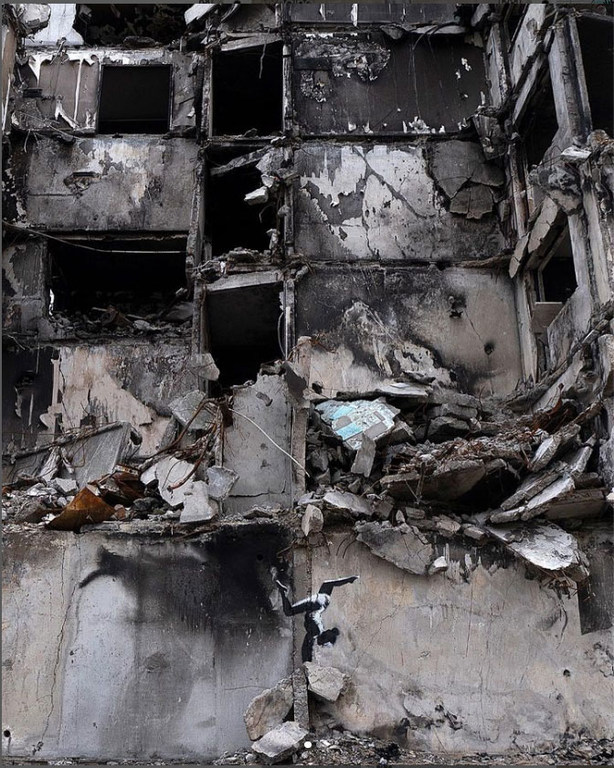
This depiction of a dancer in Borodianka was the first of a series Banksy spray painted in Ukraine after Russia’s full-scale invasion in February 2022.
When they returned home, they found their town in ruins. Of its 26 cultural establishments, 18 were damaged or destroyed, losing 95 per cent of their facilities and assets, among them a local art school.
“Every musical instrument, including a grand piano, was ruined,” she said. “We had a violin from 1826 stored in a protective box, but it was consumed by fire. Only a scorched metal violin clef was found amidst the rubble.”
Life before war
Prior to Russia’s invasion, Ms. Vyshynska and her colleagues were working to modernize the cultural institutions in Borodianka, a town with a pre-war population of roughly 13,000.
Applying her background in psychology to transform a local sewing class into a fashion theatre, students were able to walk onto a stage, showcasing their creations, gaining confidence, and overcoming fears of sharing their art with a live audience.
Before the war, town librarians helped senior citizens develop digital literacy skills.
Coming home
While many young people have left to find safety and jobs elsewhere, a steady stream is returning since the Government of Ukraine regained control over Borodianka and the northern areas of the country.
Many displaced people make the decision to return, even as the war continues. Most of those returning are in their forties and fifties, Ms. Vyshynska said.
‘They are singing now’
Acknowledging that some people still might find public events inappropriate, she said for the hundreds of attendees and for those who organize them, it all has meaning.
“Many of our singers lost their relatives; many lost their homes,” she said. “They could not sing for some time. Some needed two months, some needed three. They managed. They are singing now.”
However, coping with death and losses is a reality in the town.
“We go to the cemetery; we cry and remember our dead,” she said. “I think, they would like life in Borodianka to go on.”
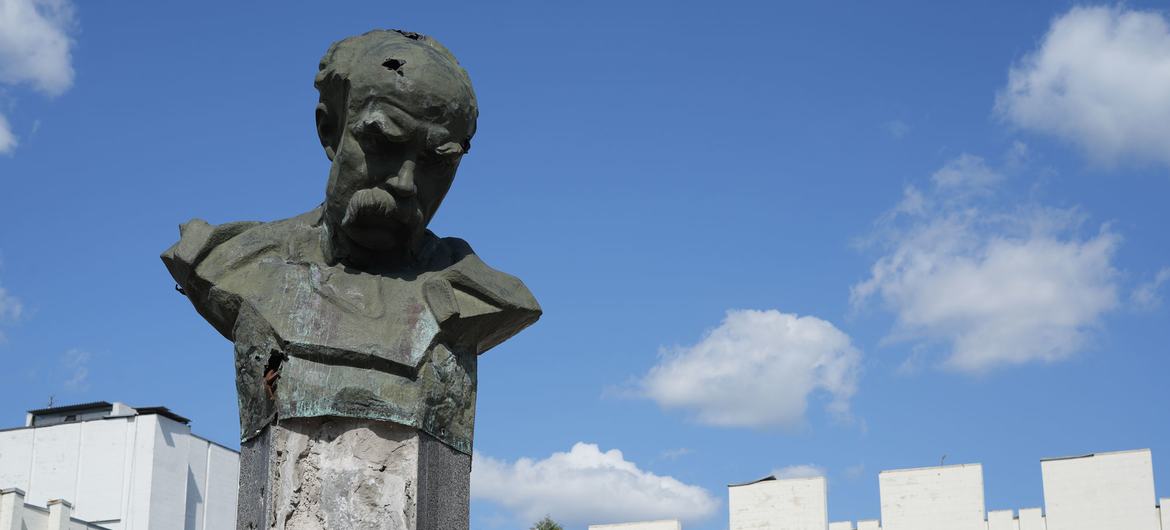
The monument of renowned Ukrainian poet, Taras Shevchenko, was damaged in the conflict.
Healing power of art
Ms. Vyshynska and her team continue to engage psychologists in their efforts, particularly with children.
“Children are afraid of death, injury, and losing their parents and homes,” she said. “By using drawing, music and games, they can express their fears and traumatizing experiences, and we help them process these difficult emotions and continue with their lives.”
Members of her community give her strength and make her proud. She can point to many examples.
There is local history expert Valentyn Moiseenko. He miraculously survived the bombing of Borodianka and escaped with his wife, who has a mobility impairment. They spent weeks sheltering in a basement. Recalling those times, he wrote a book about the days when the town was under Russian military control and at the centre of heavy fighting.
Another inspirational town resident is Svitlana Vyskochy, a local artist who creates decorated Easter eggs called pysankas. She conducts master classes for hospital patients every week, including people with amputations.

Pins adorned with “Borodianka’s culture is alive” alongside the famous maiolica rooster were created by Natalia’s team.
‘Borodianka’s culture is alive’
Ms. Vyshynska’s team have produced pins, adorned with the famous maiolica rooster and the words “Borodianka’s culture is alive”.
The town cultural centre relies on grants from businesses and international organizations.
One project supported by the UN International Organization for Migration (IOM), with funding from the Republic of Korea and Canada, is helping to refurbish a local museum. It is also creating a space for young families, purchasing equipment for a local library, and providing a huge tent that will allow Ms. Vyshynska’s team to bring services to people in war-affected communities around Borodianka.
With support from IOM, she and other community members took part in inclusive dialogue sessions, where they could collectively shape the future of their community through projects for social change.
Together with volunteers from across Ukraine, they applied these skills to transform their cultural centre, so that Borodianka can continue to celebrate its unique culture for generations to come.
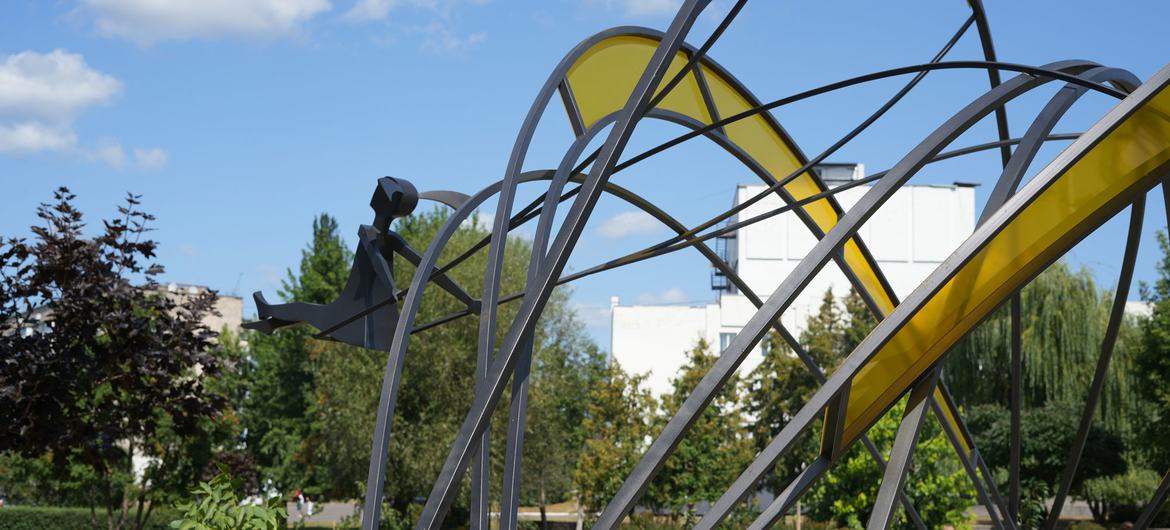
The “Girl under the Sun” sculpture represents the victory of life over destruction.

